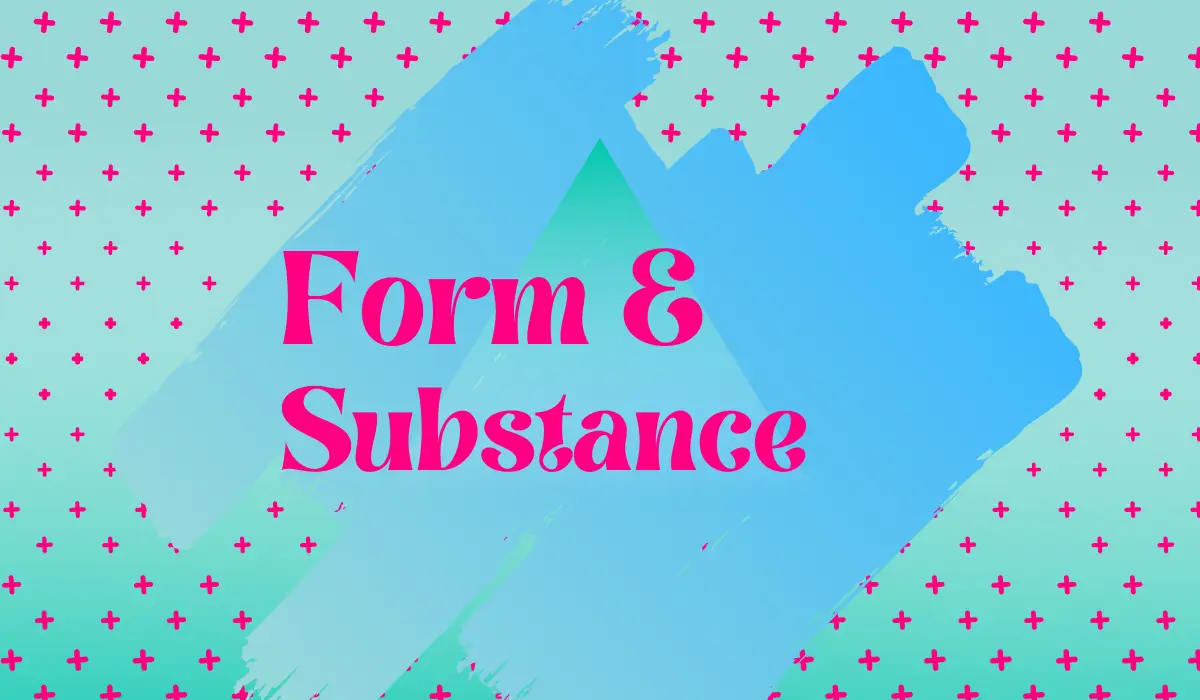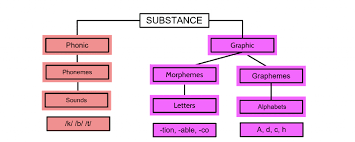
Substance is the material of language. Form cares with the arrangement of the substance into recognizable and meaningful English patterns.
Language is form, not substance. Sound and meaning constitute the substance of language, whereas the delimitation of the units constitutes form. Language quality has two parts substance and form.
Substance and Form- sounds and symbol like letters of the alphabet that represent sounds in writing are the staple of the language. In English language we have 44 sounds and 26 symbols. They are the raw material of the language and it is meaningless. From these symbols you can make any word you like. They are the phonic and graphic substance of the language. In themselves they have no meaning (individual sound or individual letter, they don’t have any meaning at all). It is only when they are given a particular shape or order that they become meaningful, i.e., it is only when they have some form that they have meaning so in themselves they don’t have any meaning.
All distinct sounds produced by human speech organs and written scripts are the substance of human language. A cluster of sounds such /n/, /t/, /e/ etc. are only sound, they need any meaning. they need to be suitably arranged into some form to form it meaningful. it’s only the sounds are arranged during a certain way, i.e., /n/ + /e/ + /t/ that we will see some meaning in them.
Ex: It is just like a log of wood which has no shape and the carpenter makes a chair or table out of it. He has changed the substance into form.
So, the symbols and the sounds, they are also like log of wood those are the substance of language, if you give them a proper form then they will have a meaning (like /n/, /e/, /t/- net, just reverse it will become /t/, /e/, /n/ – ten)

SAUSSURE’S TERM
A word has two very different components which Saussure (1916) referred to as its “form” and its “substance”. The “substance” of a word are its phonemes, its graphemes (written symbols). The “form” of a word is an abstract formal set of relations. That is, it’s our concept of what the word refers to.
Saussure mentioned the “substance” of a word as a “signifier” and a word’s “form” as that which is “signified”.
For example, the word “dog” may be a signifier. It signifies our concept of what a dog is, instead of an actual dog. This idea of dog is that the “signified” mentioned by the word “dog”.
The word is that the union of signified and signifier.
There is an arbitrary relationship between the meaningless and therefore the meaningful. We can’t determine a word’s meaning from its sounds. Even onomatopoeic words (where a word mimics the sound of the thing it names) vary greatly from language to language consistent with each language’s phonology.
Sounds when arranged during a particular order signify something meaningful. Words when arranged during a particular order express some meaningful idea or action. This means that arrangement itself gives form to the substance of the language.
LEVELS OF SUBSTANCE
Substance – is divided into two parts phonic and graphic that is sound and the written system. Phonic has phonemes means sounds like /k/, /b/, /t/ and graphic it is divided into morphemes and graphemes. Morphemes refer to letters and graphemes refer to alphabets.

LEVELS OF FORM
Form has two parts they are expression and content. Expression means shape or form of elements and this regardless of meanings. Content has level of meanings, grammar and semantics.
Sometimes your sentence is correct but does not give any meaning like the bachelor gave birth to a baby. This is grammatically correct; it has a form, it has a shape but meaningfully it is doubtful that how can the bachelor gives birth to a baby.

So, in linguistics, form and substance usually ask the particular elements or units of language, like atoms and molecules in chemistry or protons and electrons in physics, so within the case of phonology, it’s phonemes; in morphology, it’s morphemes; in syntax, it’s constituents. Form is that the concern of linguistic study, not substance. Form makes it study substance.